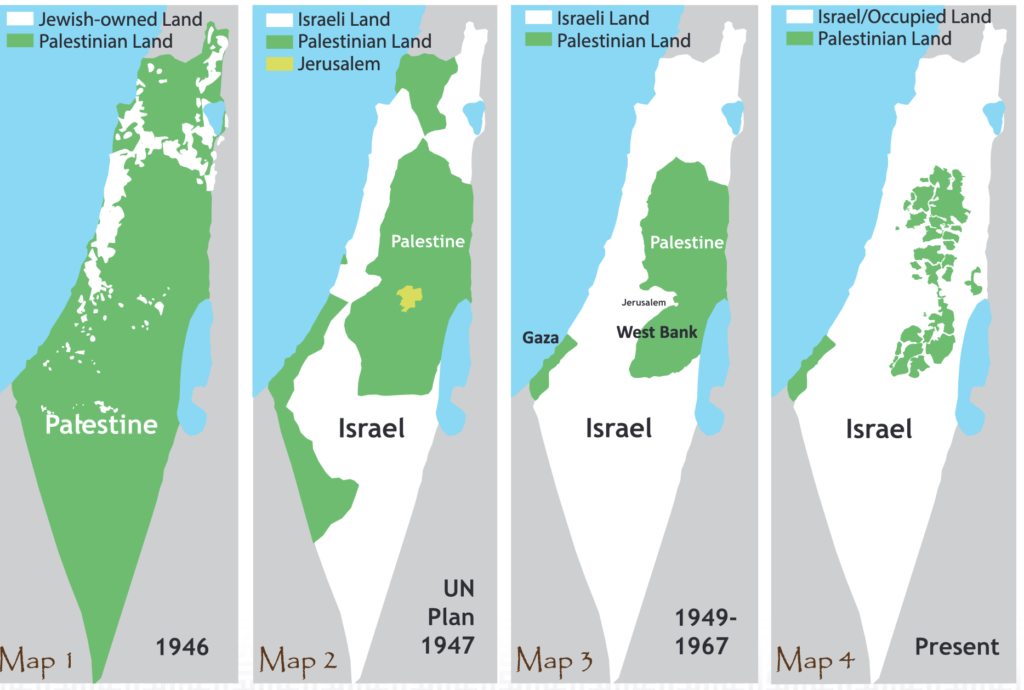My son is back home recovering well. There are some more serious sequels to come, but for the moment we will enjoy the end of year respite and welcome in what we hope is a better 2024 even with the knowledge that he is not out of the woods yet.
I remain unhappy with much of the coverage of the Hamas-Israel conflict in NZ, so threw some thoughts together on the consultancy social media account. They are just sketches designed as food for thought rather than deep analysis. I have fleshed them out a bit here.
First. What does it take for Israel to be labelled a “pariah State” and subjected to international sanctions? North Korea, Iran and Myanmar have all been branded as such and sanctioned because of their behavior (seeking nukes, human rights abuses). So what is the threshold for Israel? Or is it because it is “of” or backed by the West (specifically, the US) that it gets a longer definitional rope? I realise that there is not specific criteria for why and when a State is designated as a pariah and sanctions invoked (which themselves are not uniform or standard in nature), but surely Israel has moved into that territory. Or not?
On the other side, when it comes to those who attacked Israel on October 7, note their differences. Islamic Jihad is a religious extremist movement that pursues holy war against non-believers, Jews in particular. Hamas are an ethno-nationalist movement with some religious extremist elements that seeks to reclaim traditional lands lost to Israel. Their alliance is tactical more than strategic because their objectives overlap over the short-term but differ over the long term. They have common patrons (Iran/Russia), allies (Hezbollah/Houthis/Iraqi militias/Syria) and enemies (Israel/US/ West/Sunni oligarchies) but should not be seen as being a single entity.
The difference is important because Western corporate media tend to treat islamic Jihad and Hamas as a single organization, which implies a unified command, control, communications and intelligence-gathering (C3I) hierarchy. Although there is certainly a degree of coordination of weapons and intelligence transfers between them and their allies and integration of operational units such as what occurred on October 7, the leadership structures of the organisations differ as well as their long term objectives. More specifically, it is my read that Islamic Jihad desires a holy war and the establishment of a Caliphate in the Levant and larger Middle East, whereas Hamas wishes to reclaim what has historically been known as Palestine (hence the phrase “from the river to the sea,” demarcating the territory between the River Jordan and the Mediterranean from the Lebanese/Israel/Syria border to the Red Sea). This well-known map shows the area of claim and what has happened to it since 1946.

The fact that Islamic Jihad and Hamas have different long-term objectives means that they are potentially divisible when it comes to both military approaches as well as diplomatic negotiating strategies.They and their patrons will resist the latter as a divide and conquer approach, and they will be correct in interpreting the situation as such. But for the larger set of interlocutors trying to achieve a solution to the current status quo impasse and endless cycle of violence, separating the approach to Islamic Jihad from that towards Hamas makes sense. Remember that Hamas wants to replace the Palestinian Authority as the main agent of the Palestinian people and has strong support in the West Bank in that regard (the Palestinian Authority is headquartered in the West Bank but is totally subject to Israeli edicts and controls). Islamic Jihad would prefer to see the current conflict broaden into a regional war out of which a new Caliphate will emerge from the ashes. The Houthi attacks on shipping in the Red Sea and Shiite militia attacks on US bases in Iraq are part of that effort.
Remember that Islamic Jihad and its allies do not need to win any major war in order to prevail (they militarily cannot). But their efforts have already caught the attention of the Arab “street,” where restive populations see the indifference or complicity of their oligarchical leaders when it comes to Israel as further proof that they are Western puppets. The idea is to expose who the real Masters are, undermine their Arab servants and promote jihad on a regional, grassroots level. it may seem like a pipe dream to those of us far from the streets of places like Cairo, Amman, Tangiers or Riyadh, but if and when anger takes to the streets of such places, then the outcomes are by no means certain when it comes to regime status quo stability.
It does not appear that Islamic Jihad will accept territorial concessions in order to achieve peace, as its project is larger than removing Israel and Jews from the Levant. Hamas, on the other hand, is arguably more nationalist than religious in nature, which means that the ideological focus is on specific ancestral territory rather than on religious orientation (even if Jews make for convenient historical scapegoats). It is also something that is obliquely seen in the fact that although Palestinians are largely Sunni Muslim in religious identification, Hamas’s main support come from Shiite Hezbollah in Lebanon, Shiite Iran and the Shiite Alawite (Assad) regime in Syria. These patrons and allies well understand that the Palestinians are much like the Kurds further to the East, claiming ancestral homelands that have long since been carved up by foreign occupiers (not just European colonialists) and who for many historical reasons are reviled by their co-religious neighbours (hence the refusal to grant or cede territory for either a Kurdish or Palestinian homeland by Sunni-majority regional neighbours or the acceptance of Palestinian refugee flows from the current conflict by these same States).
We must also factor in that both Hamas and Islamic Jihad have factions within them, including political and military wings, (comparatively) moderates and militants, pragmatists versus “idealists” in their ranks. Islamic Jihad has a more unified political-military command (which makes it vulnerable) even when using a decentralised guerrilla military strategy), while Hamas has separated its political and military wings while trying to professionalize its fighters. In any case, harder or easier, these divides can be exploited if the will is there. Conversely, if the divisions are self-recognised and there is a unity of spirit against an immediate foe n face of the odds, they can be mitigated even under the stresses of overwhelming kinetic assault.
In the end, Islamic Jihad is an existential threat to the Middle Eastern status quo because it, like ISIS and Al-Qaeda, want to overthrow the established order even if its current capability to do so is minimal and dependent on the help of others. Hamas is a stronger irregular warfare actor as well as an ideological movement in the local and international imagination because of its territorial focus, so does not pose as much a threat to the broader regional order other than the fact that it’s success could encourage similar insurrectionary movements in the near elsewhere.
Many difficulties exist on the other side of the road to elusive peace in Palestine. Israel will have to cede occupied territory for Hamas to even be approachable regarding negotiations, but what with the combination of recent orthodox Jewish immigrants from the US, Russia and elsewhere fuelling the settler movement, and with the Netanyahu government leaning hard right as a result of the conservative religious extremists in his cabinet, leading to the Israeli government arming of settlers and protecting them with military units, that is clearly not an option any time soon if ever. Israelis are hinting at the Sinai Peninsula as a place to re-settle Palestinians, but Egypt wants no part of that, nor for that matter do the Palestinians themselves. So the first thing that will need to happen is for the Israeli government to change and for it to abandon its settler policies. Again, this seems like a very high mountain to climb.
Another obstacle is that Netanyahu and his supporters may see the situation as a window of opportunity. They may liken the move to eradicate Hamas from Gaza and drive its population out of the Strip as being akin to the Six Day 1967 War in which Israel stripped Jordan of the West Bank, Syria of the Golan Heights and Egypt of the Sinai Peninsula and Gaza Strip. Moreover, given the surprise of the October 7 Hamas attack this year, it is clear that Netanyahu does not want to be seen as Golda Meir during the Yom Kippur (or Ramandan) War of 1973, when Israel was caught unprepared for an attack on October 6 by Egypt and Syria, leading to large early losses for the Israeli Defense Forces (IDF). Even though Israel ultimately won that war in 20 days, Prime Minister Meir was castigated for the lack of preparedness or forewarning and her coalition lost a majority in the legislative election the next year, resulting in her resignation. Netanyahu is acutely aware of her fate as well of the actions he took that helped facilitate Hamas launching its attack (like ignoring intelligence warnings and re-deploying active duty troops from the Gaza border to protect illegal settlers in the occupied West Bank). He knows that politically he is a dead man walking unless he comes up with something spectacular.
In his mind and that of his supporters and colleagues, seizing Gaza may be just that. Since there is no credible international deterrent levelled against Israel and a lack of enforcement capacity to stop its prosecution of the war even if there was a consensus that it has gone too far with its collective punishment/ethnic cleansing campaign in Gaza, Netanyahu makes the plight of the Gazans a UN refugee problem while the IDF consolidates its physical control of the territory. That allows him to “eliminate” Hamas (and many innocents) as a physical entity in the Strip, opening the door for Israeli occupation and settlement. If that is the case, he may well overcome domestic anger at his pre-war actions and seeming disregard for Israeli hostages and instead ride a wave of nationalist sentiment to another term in office.
Should that happen, the shrinking map of Palestine shown above will have to updated yet again.

